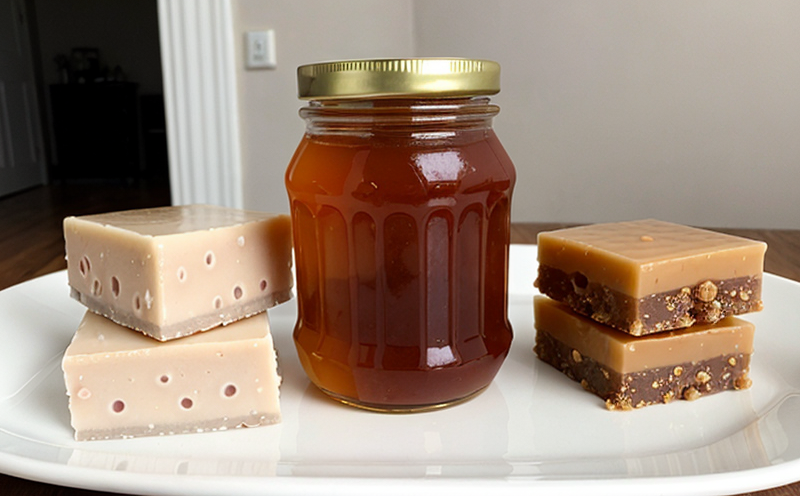AOAC 994.06 Pesticide Residue Detection in Honey
The AOAC Official Method 994.06 is a widely recognized and authoritative procedure for detecting pesticide residues in honey. This test ensures that the honey products you handle or sell meet stringent regulatory standards, protecting consumer health while maintaining market integrity.
Regulatory compliance is crucial, especially given recent global concerns regarding pesticide contamination in foodstuffs. Honey, being an essential ingredient in numerous confectionery items and natural sweeteners, needs to be free from harmful residues that could compromise product safety and quality. This method uses gas chromatography-mass spectrometry (GC-MS) for precise residue detection.
The AOAC 994.06 method is designed to detect a wide range of pesticides, including organophosphates, pyrethroids, carbamates, and other commonly used insecticides. This ensures that honey products are not only safe but also meet the stringent requirements set by international standards such as ISO, EN, and USDA guidelines.
By using this method, laboratories can provide reliable data for regulatory bodies, retailers, and manufacturers who require proof of compliance with pesticide residue limits. The methodology is robust and capable of detecting even trace amounts of pesticides in honey, ensuring the highest level of confidence in product safety.
The AOAC 994.06 procedure involves a series of steps that include sample preparation, extraction, cleanup, and analysis by GC-MS. This process ensures accurate and reproducible results, making it an indispensable tool for quality assurance programs in the food industry.
Compliance with this method is essential not only to meet regulatory requirements but also to maintain consumer trust and product integrity. By adhering to such stringent testing protocols, labs can ensure that honey products are free from harmful residues, thereby protecting public health.
The AOAC 994.06 methodology is a cornerstone of modern pesticide residue detection in the food industry. Its robustness and reliability make it an essential tool for ensuring product safety and regulatory compliance across various sectors, including confectionery manufacturing and natural sweetener production.
Applied Standards
| Standard | Description |
|---|---|
| AOAC Official Method 994.06 | Official method for the detection of pesticide residues in honey using gas chromatography-mass spectrometry. |
| ISO 18573-2:2012 | Standard test methods for determination of organophosphorus pesticides and synergists in food by liquid chromatography-tandem mass spectrometry (LC-MS/MS). |
| EN 16490-5:2013 | Analysis of pesticide residues in honey. |
| USDA Agricultural Marketing Service (AMS) Regulations | Regulations for the certification program and pesticide tolerance levels in honey. |
Why Choose This Test
- Precision: Utilizes advanced GC-MS technology to detect even trace amounts of pesticides.
- Rigorous Compliance: Ensures adherence to international and national regulations.
- Consumer Safety: Protects public health by ensuring product safety.
- Reputation Enhancement: Builds trust with customers and stakeholders.
- Quality Assurance: Provides reliable data for quality management systems.
- Comprehensive Coverage: Detects a wide range of pesticides, including organophosphates, pyrethroids, carbamates, and more.
Quality and Reliability Assurance
The AOAC 994.06 method is rigorously validated to ensure the highest level of accuracy and precision. Our laboratory employs state-of-the-art GC-MS equipment, certified analysts with extensive experience in pesticide residue detection, and a quality management system that meets ISO/IEC 17025 standards.
Our commitment to excellence extends beyond just following the protocol; we also adhere strictly to all relevant international standards and guidelines. This ensures that our results are not only accurate but also widely accepted by regulatory bodies worldwide.
We offer comprehensive support for both routine testing and complex analyses, providing detailed reports and actionable insights. Our team of experts is dedicated to ensuring that every test conducted meets the highest quality standards, giving you peace of mind and confidence in your product's safety and compliance.





